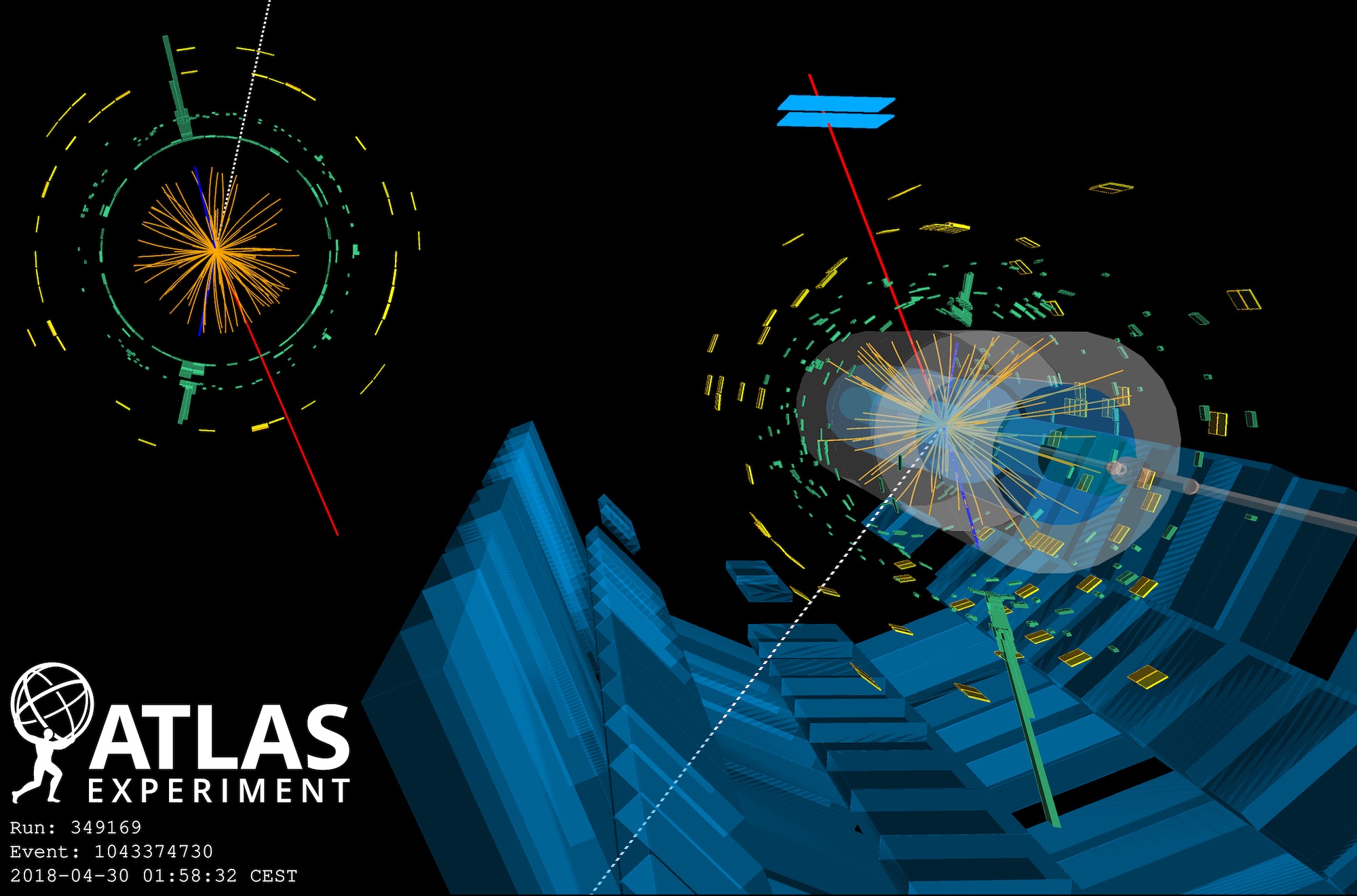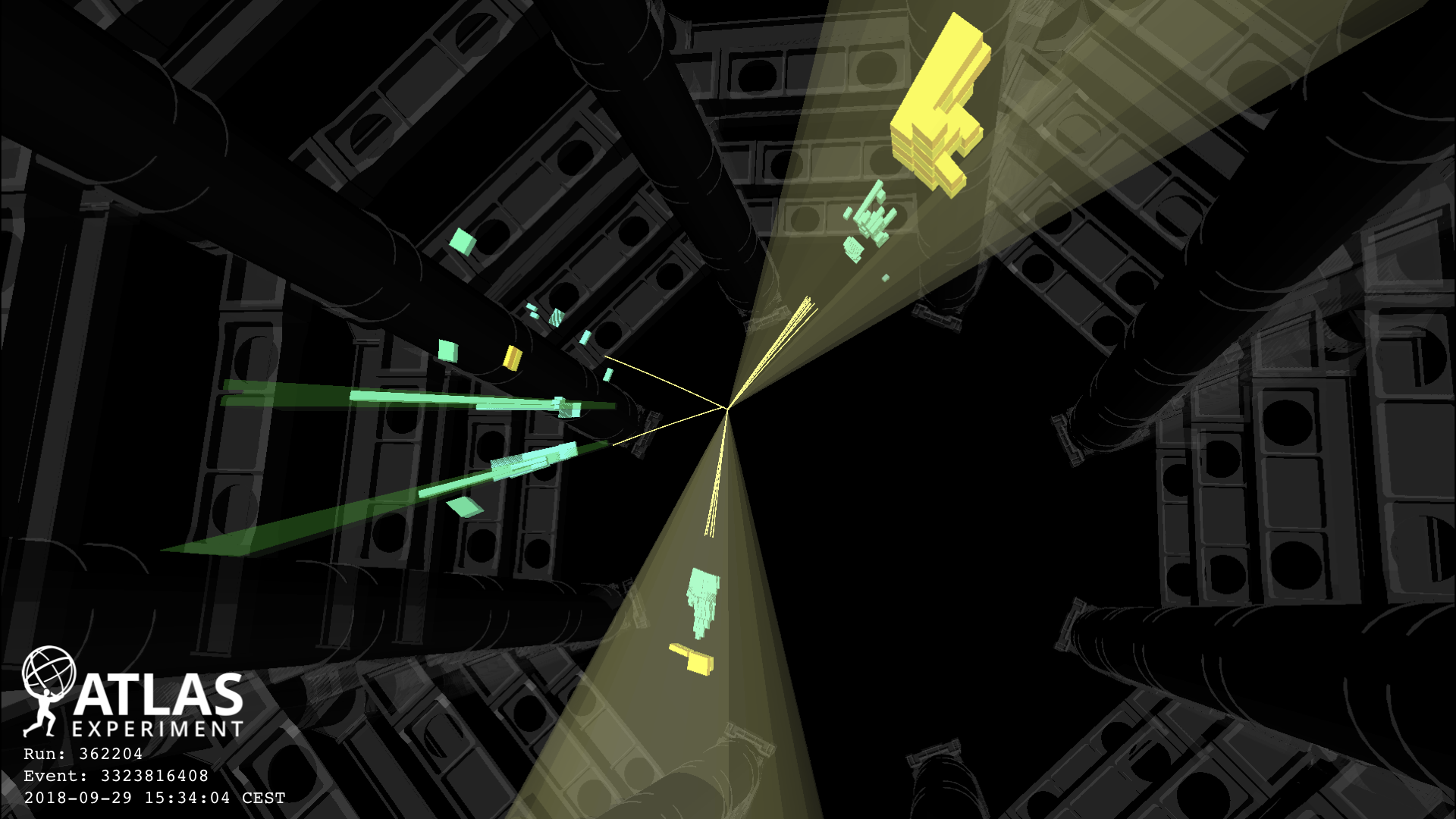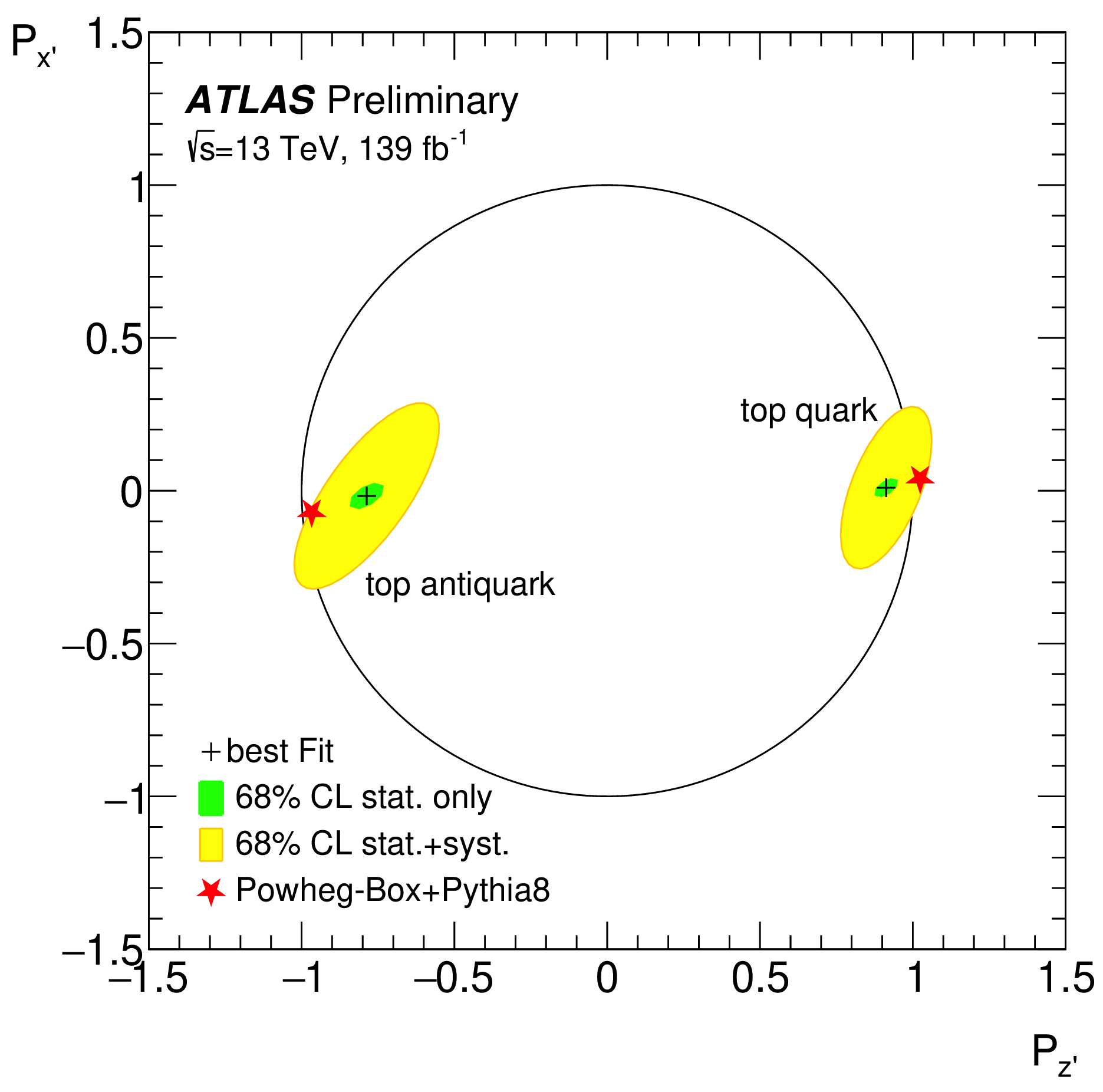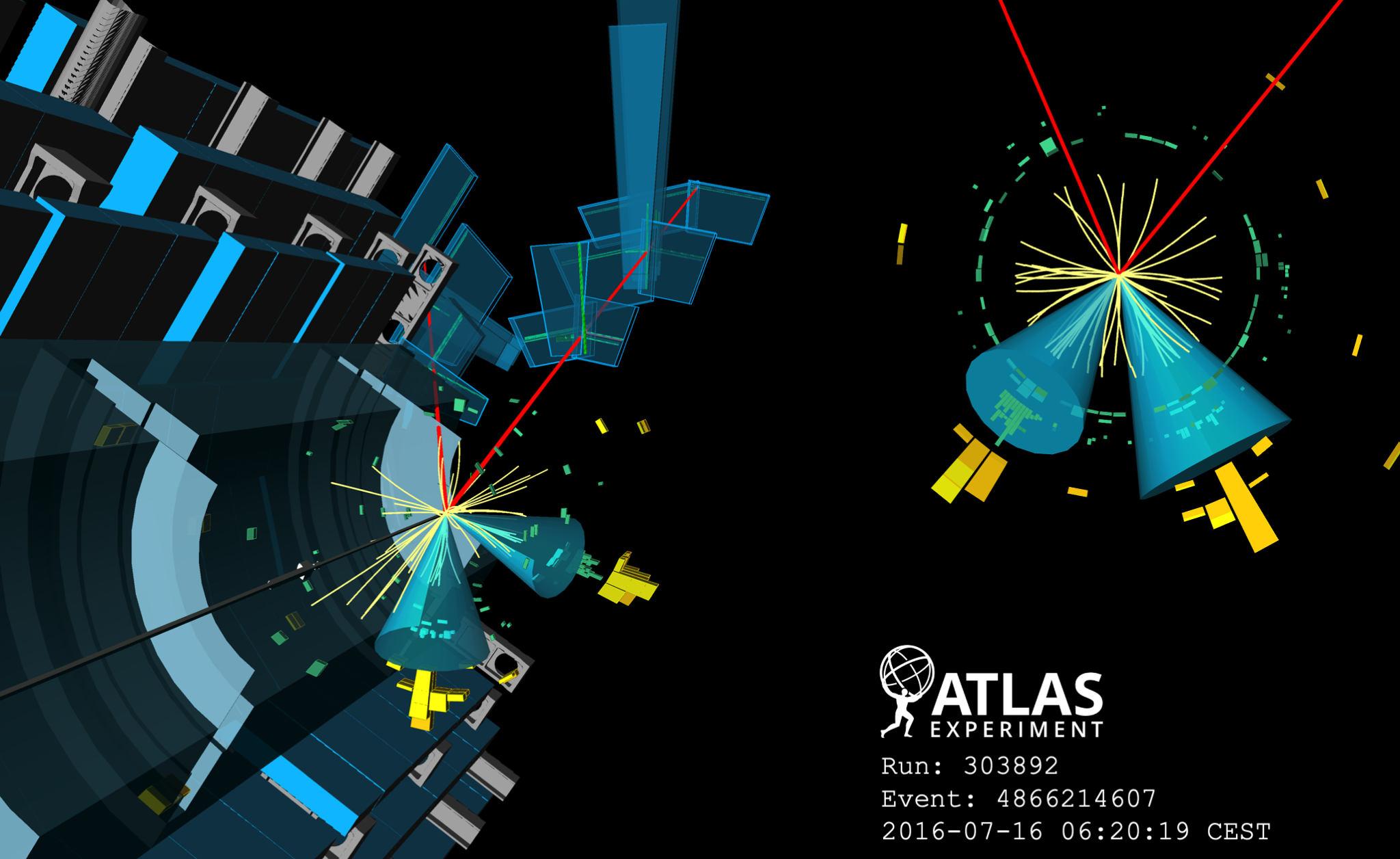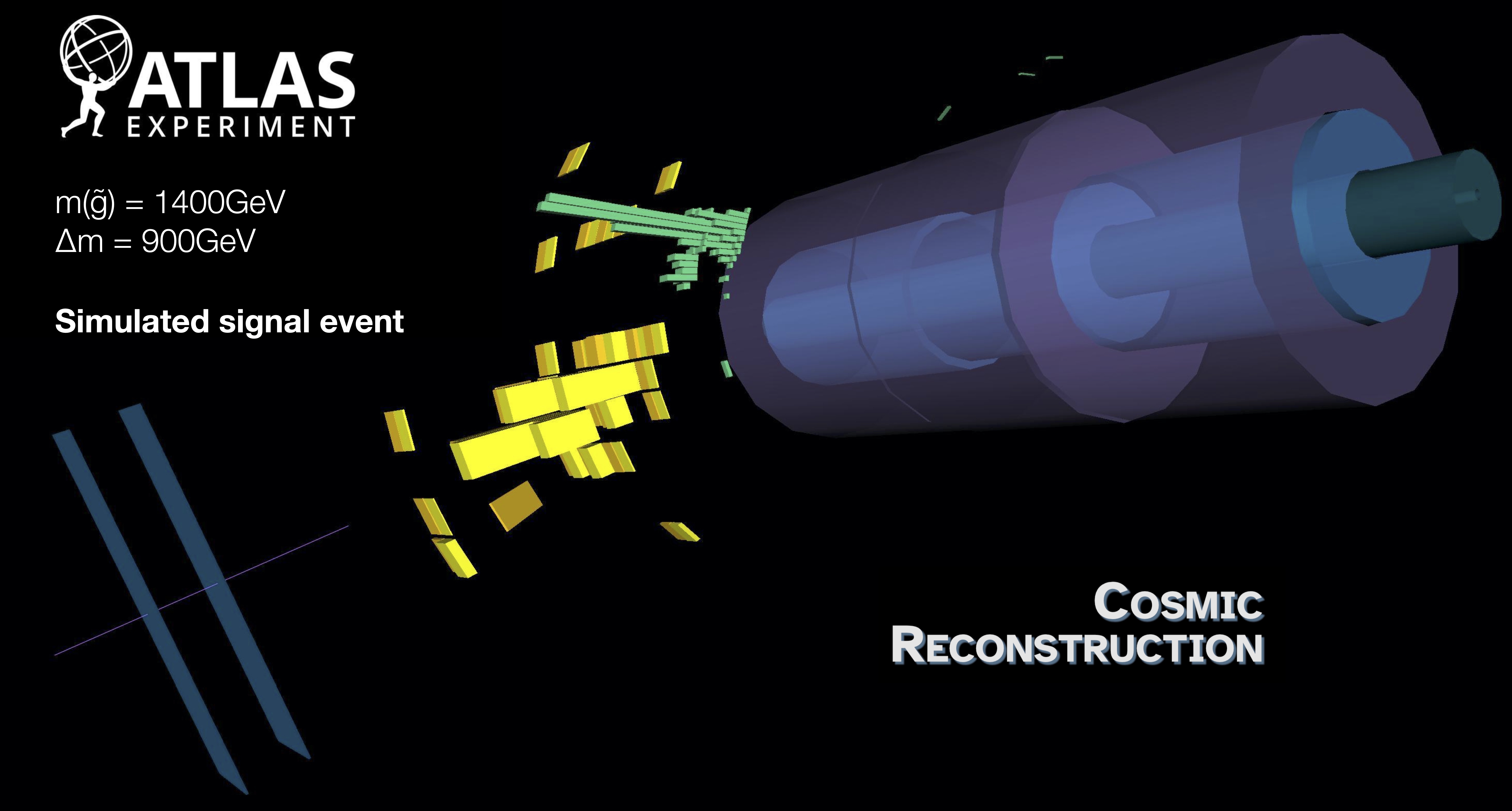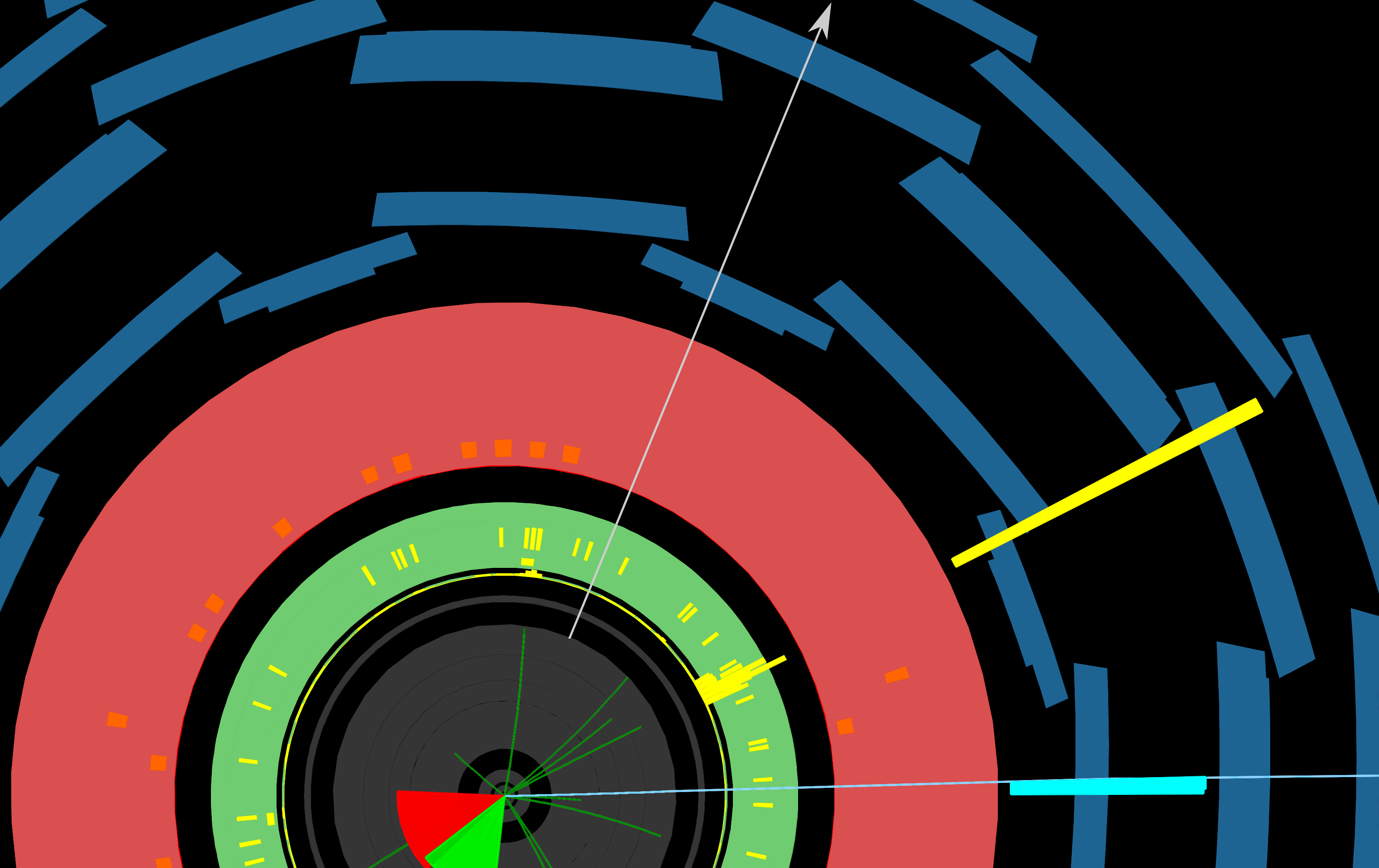Briefings
ATLAS sees a difference between beauty and charm decays of the Higgs boson
Physicists from the ATLAS Collaboration have combined two measurements of the interaction strength of the Higgs boson with two different pairs of quarks. This allows physicists to test a hypothesis that the Higgs boson interacts with charm quarks (which are second-generation quarks) in the same way it interacts with beauty quarks (third-generation quarks).
Upgraded ATLAS Liquid Argon Calorimeter ready for next LHC operation
The ATLAS Collaboration has completed the installation of “Phase-I” upgrades of the Liquid Argon Calorimeter (LAr). The upgrades improve the read-out speed of the calorimeter’s electronics and provide more efficient event-selection capabilities. These improvements will be pivotal for data-taking during the coming high-intensity runs of the LHC.
ATLAS gives new insight into the internal structure of the proton
The ATLAS Collaboration has just released a new paper combining LHC and HERA data to determine Parton Distribution Functions (PDFs), which describe what fraction of a proton’s momentum is taken by its constituent quarks and gluons.
Discovery channels join forces for detailed investigation of the Higgs boson
The ATLAS Collaboration has released updated measurements of the Higgs boson properties using the full LHC Run-2 dataset (recorded 2015-2018).
New ATLAS result seeks to unravel the charge–flavour mystery
Could there be another source of asymmetry in the Universe? ATLAS physicists are studying the differences between positively- and negatively-charged electrons and muons, looking for signs of charge–lepton-flavour symmetry breaking.
Search for elusive “di-Higgs production” reaches new milestone
According to the Standard Model, the Higgs boson can interact with itself, resulting in the simultaneous production of two Higgs bosons ("di-Higgs production"). In a new result, the ATLAS Collaboration combines three di-Higgs decay channels to reach the best limits yet on di-Higgs production.
Teaching established software new tricks
Following several years of development, ATLAS Collaboration has launched a new "multithreaded" release of its analysis software, Athena.
Searching for new physics using asymmetric top-quark events
Finding the differences between these types of matter – while extremely challenging – could reveal well-hidden effects that hint at the existence of new particles and interactions. In a new result presented at the TOP 2021 conference, the ATLAS Collaboration probed the heaviest-known elementary particle, the top quark, in search of these effects.
Hunting for forbidden decays of the Z boson
In a new study, the ATLAS Collaboration looked for Z bosons decaying into an electron and an anti-muon, or into a muon and a positron.
ATLAS measures key Higgs boson interaction with high precision
The ATLAS Collaboration releases new measurements of the Higgs-boson decay to tau leptons. The result provides new insight into the “Yukawa coupling”, a key interaction of the Higgs boson.
Two Higgs bosons are better than one
One of the long-term goals of the LHC is to measure the Higgs-boson self-coupling, which in turn can give us clues about the formation of the early Universe. This self-coupling can only be measured directly by studying the production of pairs of Higgs bosons (HH).
Probing new physics with pairs of Higgs bosons
The ATLAS Collaboration has released a new result searching for pairs of Higgs bosons (HH) produced by new particles. The Higgs bosons would then each decay into pairs of bottom (b) quarks – known as the '4b decay channel'.
ATLAS reports first observation of WWW production
The ATLAS Collaboration announces the first observation of “WWW production”: the simultaneous creation of three massive W bosons in high-energy LHC collisions.
Shining light on the strong interaction: ATLAS measures photon pair production
What can particles of light – photons – tell us about the inner workings of the Standard Model? A new paper from the ATLAS Collaboration measures pairs of photons to improve the understanding of a fundamental force of Nature – the strong force – and thus scrutinise the theoretical models that underpin high-energy physics research.
Studying “Little Bangs”: exotic collisions probe the size of quark-gluon plasma
A new result from the ATLAS Collaboration studies the interactions of photons – particles of light – with lead nuclei at the Large Hadron Collider (LHC). Using new data collection techniques, physicists revealed an unexpected similarity to the experimental signatures of the quark–gluon plasma.
The hunt for higgsinos reaches new limits
The ATLAS Collaboration has released three new searches for "higgsinos" - the super-partner of the Higgs boson.
Heavyweight champions: a search for new heavy W’ bosons with the ATLAS detector
A new search from the ATLAS Collaboration, released this week at the Large Hadron Collider Physics conference (LHCP 2021), sets limits on the mass of the W’ boson.
ATLAS measures the polarisation of top quarks and antiquarks
In a new result presented by the ATLAS Collaboration, physicists have measured – for the first time – the full polarisation vectors for both top quarks and antiquarks.
New search for charming decay of the Higgs boson
At the LHCP2021 conference, the ATLAS Collaboration presents a new direct search for the decay of the Higgs boson to charm quarks. Observing this decay would give physicists new insight into the Higgs boson’s relationship with the second generation of matter particles.
Twice the Higgs, twice the challenge
In the post-Higgs discovery era, scientists at the Large Hadron Collider (LHC) have been hard at work studying the Higgs boson’s properties. One property that remains to be experimentally verified is whether the Higgs boson can couple to itself (self-coupling).
ATLAS finds further confirmation of evidence for four top quark process
In a new result released this week, the ATLAS Collaboration studied the production of four top quarks at once in LHC collisions. This is the heaviest particle final state ever seen at the LHC, and provides physicists with a unique opportunity to study the top quark’s relationship to the Higgs boson.
Better late than never: ATLAS searches for late-decaying new particles
A new result from the ATLAS Collaboration – debuted at the virtual Moriond Electroweak conference – sets itself apart from more traditional LHC searches. Typically, physicists will look for new particles produced in LHC collisions that immediately decay to known or invisible particles. This analysis, in contrast, looks for new particles that live for roughly a hundred nanoseconds or more before decaying.
Deeper insight into Higgs boson production using W bosons
The Higgs boson reveals its properties to the outside world twice: during production and decay. ATLAS’ new result studies the Higgs boson at both of these moments, looking at its production via two different methods and its subsequent decay into two W bosons.
The supersymmetric bottom quark and its friends
The special status of the top and bottom quarks makes them key players in the search for phenomena not foreseen by the Standard Model. New ATLAS results set strong constraints on the production of supersymmetric bottom quarks and of possible dark-matter particles.
Studying top quarks at high and not-so-high energies
CERN’s Large Hadron Collider (LHC) is famous for colliding protons at world-record energies – but sometimes it pays to dial down the energy and see what happens under less extreme conditions.













